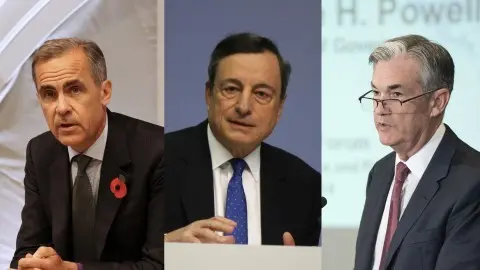Riksbank still in wait-and-see mode
No change from the Riksbank leaves the timing of the first interest rate increase uncertain. We continue to see a February hike as somewhat more likely than a move in December
The Riksbank left both the policy rate and the forecast for interest rates unchanged today. The policy statement is also broadly similar to September, indicating that the policy rate “will be raised by 0.25 percentage points either in December or February”. Two monetary policy committee members are now voting for an immediate rate hike (Martin Floden joining Henry Ohlsson in the hawkish dissenter’s camp).
The forecasts for GDP have been revised down following the statistics office’s major revision to the Q2 GDP figure, and now indicates somewhat weaker momentum in the Swedish economy. Unemployment has also been revised up following weaker employment growth figures.
Set against that, the inflation forecast is largely unchanged, and the statement is somewhat more optimistic that underlying price pressure is consistent with inflation remaining around the 2% target.
In our view, a December or February hike looks like a genuine 50-50 decision at this point and probably comes down to the data between now and the December meeting
In effect, the economic situation has reversed from the first half of this year, when GDP growth was very strong, but inflation looked anaemic. Now, price pressure look reasonably solid, at least in the near term, but growth is clearly slowing down. Similarly, global risks have shifted towards the downside and increasingly look like a factor that could nudge the inherently cautious Riksbank governors towards (an even more) gradual tightening path.
The fact that there is no indication that a December hike has become more likely, which to some extent had been expected after the strong September inflation reading, means today’s stance is very marginally more dovish than anticipated. As a result, the krona has weakened slightly, and near-term forward rates have shifted down a touch.
In our view, a December or February hike looks like a genuine 50-50 decision at this point and probably comes down to the data between now and the December meeting.
We still see the Riksbank's forecast for GDP as somewhat on the optimistic side. Combined with further turbulence on global markets, this suggests to us that the cautious majority on the Riksbank board are likely to push the first rate hike into February, but it is a close call.
This publication has been prepared by ING solely for information purposes irrespective of a particular user's means, financial situation or investment objectives. The information does not constitute investment recommendation, and nor is it investment, legal or tax advice or an offer or solicitation to purchase or sell any financial instrument. Read more
Download
Download snap
24 October 2018
In case you missed it: A flurry of central bank meetings This bundle contains 11 Articles